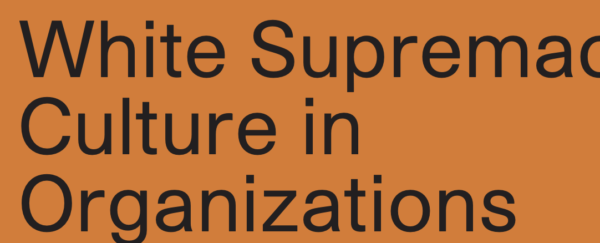What is White Supremacy Culture
Some organizations might not be familiar with the term ‘white supremacy culture. The authors of this document use the following definition:
White supremacy culture is the idea (ideology) that white people and the ideas, thoughts, beliefs, and actions of white people are superior to People of Colour and their ideas, thoughts, beliefs, and actions. White supremacy expresses itself interpersonally as well as structurally (through our governments, education systems, food systems, etc).
In this view, the authors understand white supremacy as not only speaking to the activities and beliefs of the far right/alt right/white nationalists- but understanding that those movements exist on a spectrum, as part of a North American society whose underpinning, history, beliefs, interactions, are marked and defined by a history of white supremacy. Although this document also does a beautiful job of acknowledging that these beliefs and practices are ones we can all participate in (people of colour and white people alike; white dominant organizations as well as BIPOC ones), it names clearly which direct racism runs in.
White Supremacy Culture in Organizations
The document is divided into 5 overarching sections, describing aspects of white supremacy culture:
- Perfectionism, including worship of the written word, “one right way” and “either/or” thinking
- Concentration of Power, including power hoarding, paternalism, and defensiveness
- Right to Comfort, including fear of open conflict
- Individualism
- Progress is Bigger/More, including objectivity, quantity over quality, and sense of urgency
How to Use this Document
Feel free to break this document into smaller chunks. You can choose a couple of sections at random or based on observations of the organizational culture. Talk together about how the characteristics listed apply to your organization and ask:
- How do these cultural features exist in our organization or group? How are they hurting us, if they are? How do the descriptions mirror our experience or not?
- Is there a difference in how people of colour in the group experience these cultural beliefs and how white people do? What could we learn from that?
- What steps could we take to change these features in a day-to-day way? What solutions could the antidotes offer us? Are we ready and willing to do that?
Not all organizations are ready for this conversation. However, for those that are, these kinds of conversations can be rich and invigorating. They allow us to explore the day-to-day experience of working together and offer a path to imagining and implementing a different way of being.





